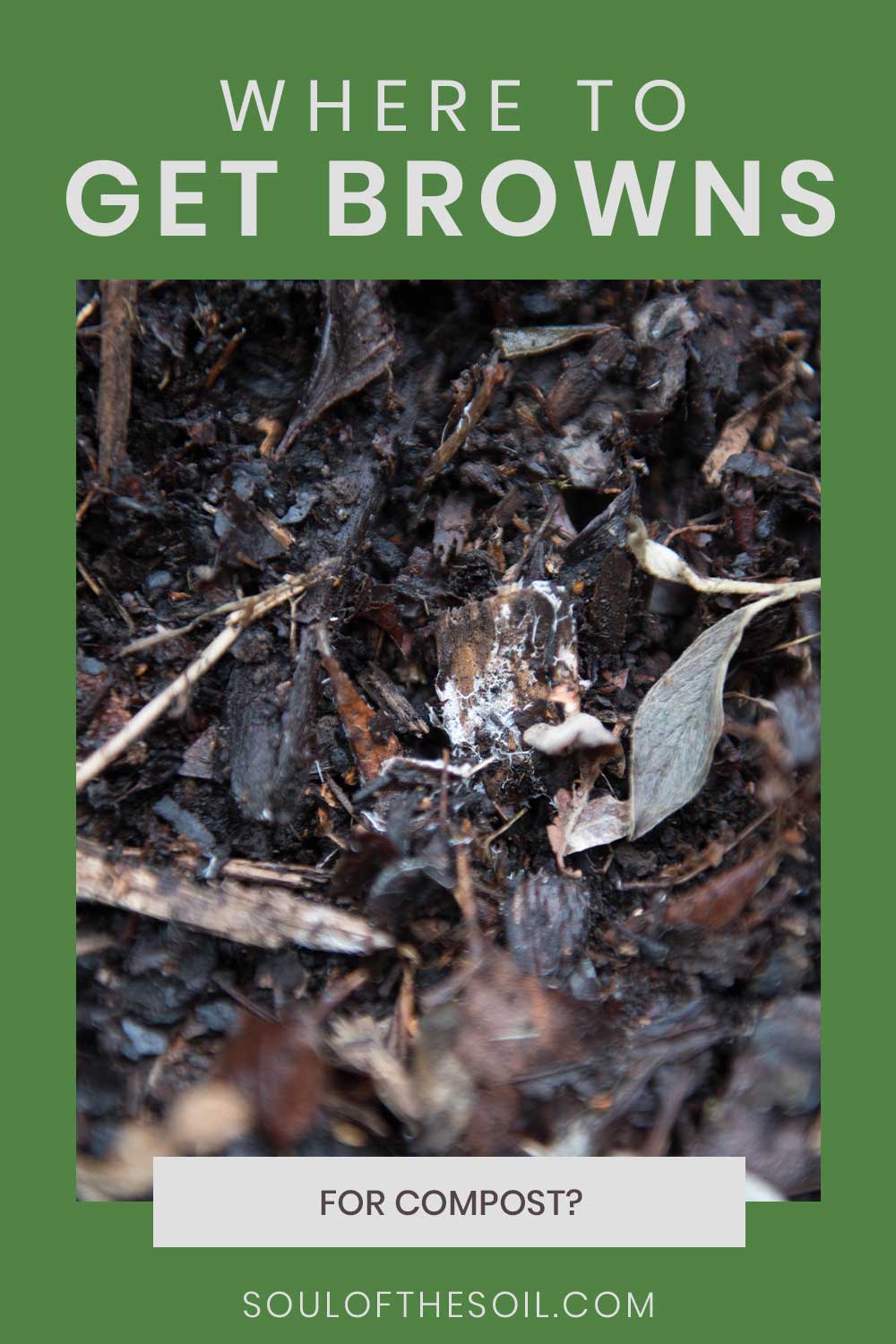Where To Get Browns For Compost?
We may earn commissions for purchases made through links on our site. Learn more on our about us page.
For those not privy to what ‘brown’ material is referring to, in composting terms, this refers to the carbon bio-material that comes from plants like twigs, clippings, leaves, and other tree-like matter.
Each year the deciduous trees will drop their leaves in anticipation of winter’s cold and snow – this is the perfect time to bag a few leaves for the compost heap.
If you live near a park or a federal or state forest, ample amounts of material will work for browns. However, be sure to take only the materials that will not harm the plant or wildlife.

Do you need Browns for Compost?
There will be specific gardens that will want to have the brown nutrients to help grow taller and fuller vegetable gardens and other flowering plants. On the other hand, some plants will require a quick shot of nitrogen and want green material-rich compost soils.
The brown materials will be more for carbon nutrient needs; the science and art of composting comes in the form of mixing the right materials and getting the right compositions for growing specific gardens.
The need for carbon nutrients will be on a by-need basis and will depend on the gardener’s needs.
How do you get enough Browns for Compost?
The first step a person will need is to determine the carbon needs of the plant being grown or the composition needs of the compost heap.
Once you figure out the needs of the plants in the garden, collecting the brown material will not be that difficult for those with access to parks and national forests.
If you have a chipper or similar machinery, chop any larger limbs into smaller and more manageable pieces, making the material easier to decompose in the compost heap.
As mentioned above, if there is a need for more brown materials, remember pre winter deciduous tree leaf drops.
What Happens if There are not Enough Browns in the Compost?
If there is not enough carbon material in the compost, the pile will risk turning wet and sludgy instead of solid and nutrient-rich soil.
If you cannot find natural tree-provided materials, consider using shredded paper or eggshells to help introduce some carbon back into the compost heap.
The worst-case scenario is when the inside of the pile loses oxygen, and the sludges will produce an unpleasant odor and encourage the growth of anaerobic bacteria. This will kill the living material and require the gardener to start over.
Is Coffee considered Brown in compost?
No, Coffee grounds (though brown in appearance) are actually a nitrogen-rich source of materials and would be considered a green material in the composting world.
If you have a frequent coffee drinker and your garden, there will be no shortage of nitrogen, so be sure to keep up with brown fibrous items.
A tip for helping the compost break down the coffee grinds, introduce the shredded pieces of coffee filters to provide some brown carbon material needed to generate the healthy composition cycles.
Then, use this soil for acid-loving plants like blueberries, carrots, and radishes.
Are Tea Bags Green or Brown Compost?
A tea bag is made of paper, silk, and other materials depending on the manufacturer, which provides carbon-rich brown materials. Then you have the tea leaves, which are nitrogen wealthy and will balance out.
These little packets are the perfect little packages for natural materials for the compost, providing both green and brown compost. So think about that the next time you ideally toss out a tea bag, especially if you have compost curing on the homestead.
The quick answer will be that tea bags provide both bits of matter for the compost and will provide health benefits in drinking and creating soil to grow more tea.
Final Thoughts on Where to get Browns for Compost
Composting will be the solution to any unyielding dirt or soils; as you build your compost, remember to keep a healthy balance of brown and green materials and keep the pile supplied with oxygen.
These systems take time and hard work to get the right bacteria cultures to grow and conditions to become suitable for composting.
Remember that green materials are for nitrogen and will be things like vegetables. Also, keep in mind that paper, eggshells, and wild plant matter will be the best sources of carbon-rich brown compost materials.
Finally, be sure to do a little research when mixing up suitable soils for food plants to get the best mixtures for better yields.



Leave a Reply
You must be logged in to post a comment.